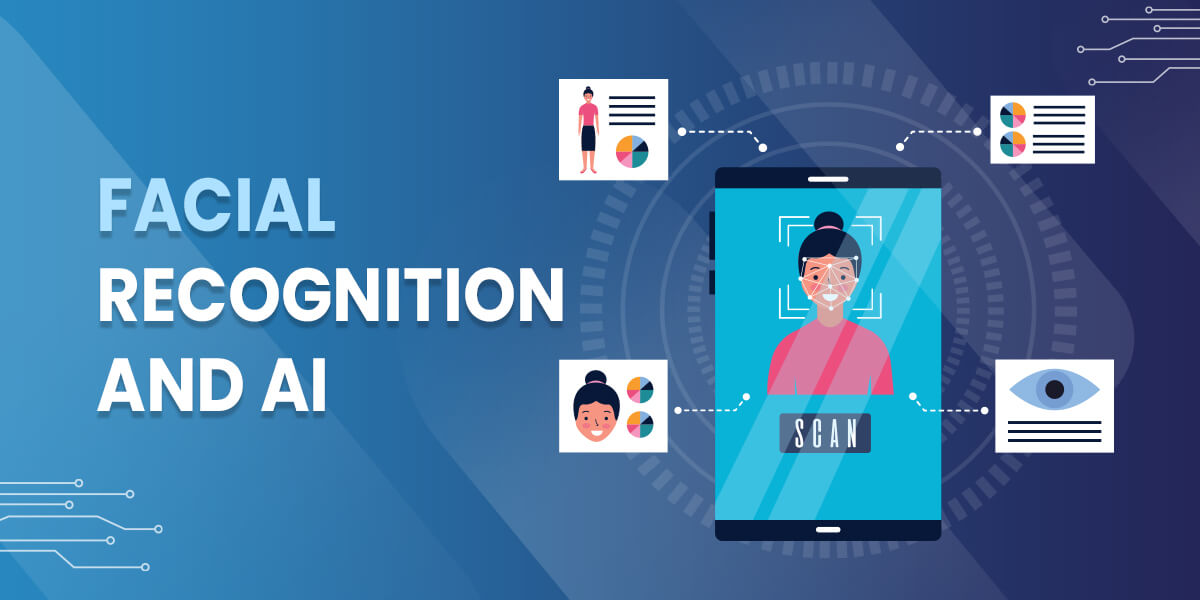Facial recognition is one of the few biometric technologies that has received a lot of supportive and opposing arguments. The combination of facial recognition and artificial intelligence is a powerful, accurate, and disruptive one in various fields.
What is facial recognition?
- Facial recognition is a powerful technology that helps identify and find human faces in digital videos and images.
- Facial recognition makes use of a group of algorithms that function together to identify people in a static image or video.
- The technology of facial recognition has been in existence for many years. However, with the innovation and integration of artificial intelligence, facial recognition has become even more powerful than before.
- AI facial recognition is a facial recognition system that makes use of an AI powered facial recognition software capable of instantly comparing one or multiple faces to the database of different faces that exist.
- AI facial recognition systems deliver an accuracy of 99.5% in standard datasets.
Benefits of AI facial recognition
Accurate detection
Chances of errors or spoofing in facial recognition systems are minimal due to the use of artificial intelligence, deep learning, and machine learning.
Automation of identification
Facial recognition eliminates the need for manual identification of individuals, thus saving time, money and reducing the chances of errors.
Facial recognition systems identify images automatically, function 24/7, and deliver more accurate and reliable results compared to manual identification.
Improved security
With the use of 3D biometric technologies and infrared cameras, the use of facial recognition can identify and keep track of employees and visitors entering the premises.
Hassle-free integration
Facial recognition is easy to use and integrate with most other technologies and security software in the market.
Applications of facial recognition
Airlines
Facial recognition scanners are used in many airlines to identify the identity of the person, thus preventing the need to keep track of the tickets.
Hospitals
- Facial recognition systems can be used in hospitals and healthcare centers to keep the records of patients systematically.
- The use of facial recognition in hospitals will help the staff retrieve the details of patients within seconds.
- Also, it will enable the hospital staff to check whether a person claiming to be a patient is really a patient or not.
Security
Facial recognition is also helping the governments of different countries in improving the surveillance and tracking the terrorists and criminals down wherever they are located.
Forensic investigations
- Facial recognition can help speed up forensic investigations as it can automatically identify and recognize individuals seen in the CCTV footage or camera from the existing database.
- Automated face detection of the dead or unconscious persons at a site can help speed up the investigation process.
Social media
- The popular social media platform Facebook makes use of facial recognition technology.
- When Facebook users appear in an image, it automatically detects them.
- The use of facial recognition by Facebook makes it easy for users to find the images in which they are tagged.
How do facial recognition systems function?
Facial recognition functions in a step-by-step manner.
Capturing and scanning
The image is captured using cameras or scanning existing images.
Extracting of facial data
Facial data is extracted from the sample image.
Comparing the data from the database
Facial data in comparison with the data already present in the database.
Matching and identifying
The facial recognition software detects whether the sample images match with any in the database or not.
Facial recognition for grizzly bears – A real world example
There are wide applications of facial recognition systems when it comes to human beings. But, do you know that facial recognition and artificial intelligence have also been used in the case of grizzly bears?
Like other animals, bears do not have many identifiable (recognizable) markers, thus making it difficult to distinguish them from one another.
Researchers have come up with BearID, an artificial neural network system to research, monitor, and protect the grizzly bears. BearID consists of a combination of neural network and AI facial recognition to identify an individual bear, which otherwise is very difficult.
The BearID project functions in two stages:
- In the first stage, the facial recognition software measures the different features like eyes, forehead, ears, tip of the nose, etc. The distance between the different parts of the face acts as markers.
- In the second stage, the AI facial recognition system sorts and labels the images, and performs image processing to distinguish one bear from the other.
With BearID, a facial recognition system, it is possible to individually map the facial features of grizzly bears, thus making it easy to track animals.
BearID makes the job of scientists and researchers easy, as there is no need to individually tag the bears. Facial recognition system used in BearID has shown an accuracy of 84% in facial image recognition.
Although the use of AI facial recognition is increasing rapidly, there is a need for careful evaluation and monitoring of the algorithms for effectiveness, risk, bias, efficiency, and return on investment (ROI). The use of AI governance is a great way to accomplish this. Just like every other aspect of artificial intelligence, AI governance is crucial too.

